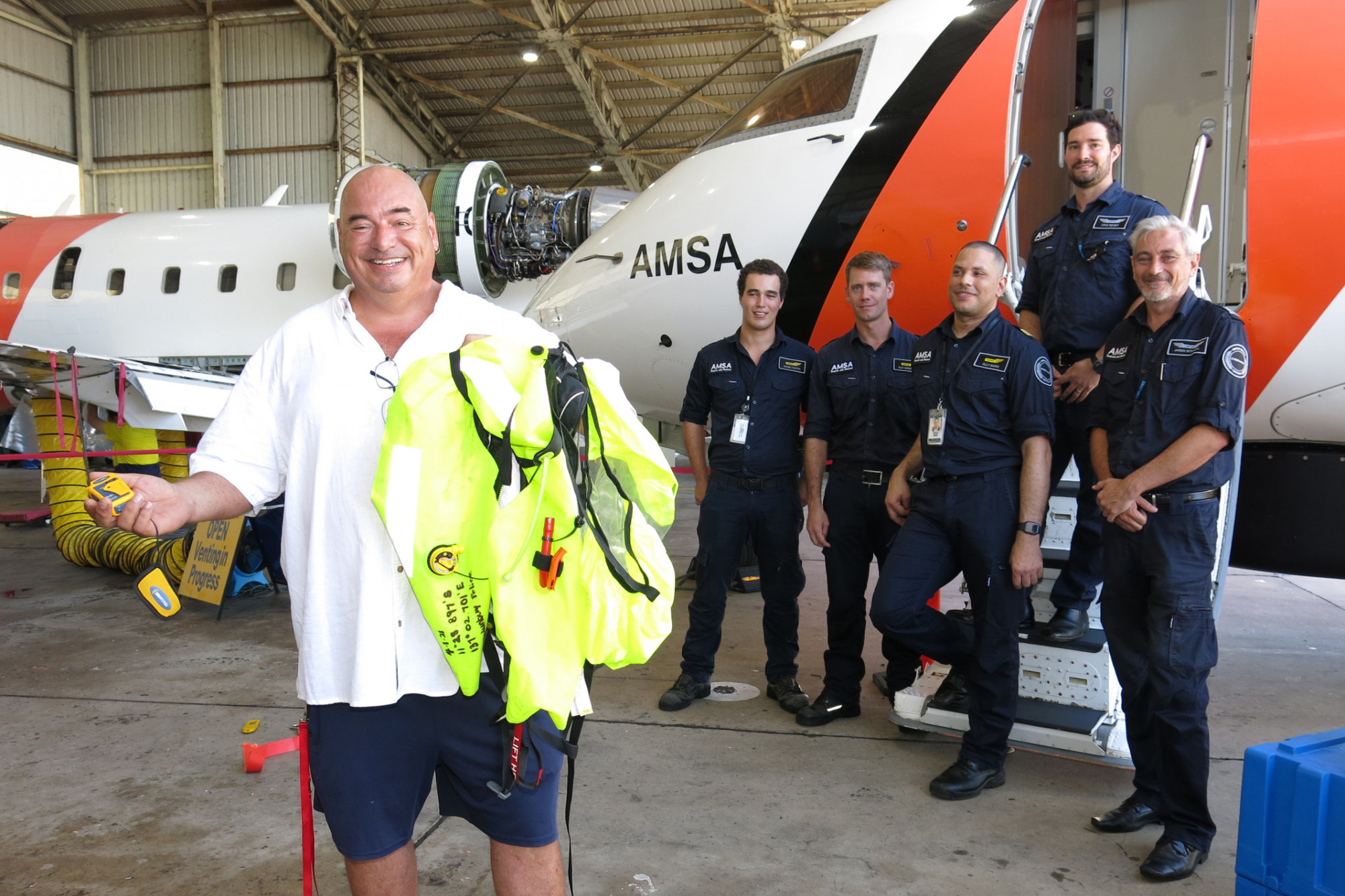General News
26 February, 2021
Sailor thanks rescue team after terrifying ordeal
A SOLO sailor who survived eight hours adrift after being pitched overboard from his yacht has praised the team of Cairns-based Search and Rescue (SAR) personnel who saved him, and urged other sailors to ensure they carry a Personal Locator Beacon (PLB).

Nigel Fox, 55, said he owed his life, and that of his cat, to the skilful actions of the five men from the Cairns base of the Australian Maritime Safety Authority (AMSA) who flew to his rescue in a SAR Challenger Jet on January 4.
“Words can’t really quantify the happiness. They’ve given me a new lease on life,” said Mr Fox.
“And they’re part of a far larger network of people that saved my life.
“These are the guys at the sharp end, but let’s not forget all the people in the background … they pooled together [and] saved my life.”
Mr Fox was sailing, with his cat ‘Stinky’ as his only companion, from Darwin to the East Coast of Queensland on January 4, when he encountered a storm, 93 kilometres northeast from the remote town of Nhulunbuy in the Northern Territory.
In what must have been a terrifying ordeal, he was knocked overboard and found himself hanging from the side of the yacht by a safety line, with his head underwater.
“It was hanging me there, head and shoulders down, and I was on the lee-side of the yacht so it was just pushing my head constantly underwater — basically I was drowning,” he said.
He managed to reach his knife and cut himself free, then activated the PLB attached to his life jacket.
Upon receiving the PLB signal, AMSA dispatched the jet from Cairns with the team of five men who were able to locate him.
“When I first saw the aeroplane I thought, ‘Hope,’” Mr Fox said.
“That’s when I knew the (PLB) was working. That little box of electronics, that’s what saved me.”
The crew in the jet successfully dropped a life raft to him before he was later retrieved by NT police.
Aircraft Mission Coordinator Ollie Marin who was on-board the AMSA Challenger Jet on the day of the rescue said it was no easy feat to find Mr Fox and drop the life raft to him.
“What actually picked him up was three cameras on the nose of the aircraft called ViDAR, which is actually a technology to automatically detect different colour and shape based on the background of the water,” he said.
“Thanks to Nigel’s bright lifejacket, the cameras automatically took a picture and gave his position, and then we set up to drop a life raft.
“Most people wouldn’t know about the level of precision required to drop a life raft from a jet aircraft travelling at 200 feet, 330 kilometres per hour to a single person in the sea. A successful drop and an unsuccessful drop is separated only by a matter of 3-4 seconds.
“Until he’s in that raft it’s pretty tense, and it was a big sigh of relief when he was finally in and we knew he was safe.”
Mr Marin added that it was Mr Fox’s safe practices in wearing a life jacket with a PLB that made his rescue possible.
“He’s the one that saved his own life that day, we’re just the result of the actions that he took,” he said.
The AMSA team located Mr Fox’s yacht almost a day later, and his cat, ‘Stinky’ was found grumpy, tired and hungry, but safe on board, after commandeering it solo for about 130 nautical miles.


